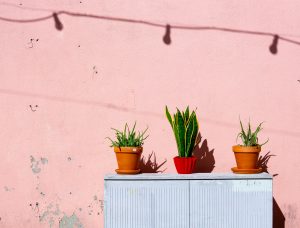If you’re wondering why your yard is always wet, especially after it rains heavily, it’s time to take action. Understandably, lawns with drainage problems can be a pain, and you might be looking for an instant solution. But first, you need to figure out what’s wrong and what causes it.
The appropriate solution to your wet yard depends on what the problem is. If you notice that your lawn is always wet and flooded, there’s possibly a drainage issue. Maybe it’s the gutter that directs rainwater into the yard, or it can even be from neighboring properties. This can result in erosion issues, especially if you have plant beds.
Many homeowners already have indented soil spots where water always holds. Water always proceeds to where it’s least resistant. It can be a pool of water or just dips in certain areas in your yard, which can be home grounds for mosquitoes.
If you notice the soil is soft and damp, its health can be a problem as well. This can lead to low spots, and the water in those indented spots can spread because of compacted soil, making it more difficult to drain.
Dealing With Small Indented Spots
You can always replant with water-tolerant plants. These types of plants will improve soggy spots and sip up the remaining unwanted water. Once the plants grow, they will attract pollinators and improve drainage by loosening the soil with their roots and organic matter.
Another suitable solution is to fill the low spots to get rid of compacted soil and improve drainage. If this is done properly, it distributes water underground instead of causing it to stay elsewhere.
To get rid of wetness in depressed spots, remove all plants, leaves, and grass and fill the depression with topsoil. Push them all together in a compact. Grade the already filled in spot to avoid water to stagnant. This will also keep water away from the foundation of the house and create water damage.
If you’re using sod to fill in the depression, ensure that the last elevation doesn’t cause water to collect on the sloped sides. With grass, protect the seeds with a small amount of topsoil and top it on with a thin layer of straw. This thin layer of soil and straw will help protect the seeds from unwanted pests and enhance germination.
Dealing With a Flooded Yard

As mentioned earlier in the article, water can spread if the problem has gone too far. Redirecting the runoff of the rainwater can be one solution. However, this doesn’t ensure you entirely that it will avoid depression. This can work if the issue isn’t that deep yet.
Capturing and storing runoff water helps protect your local bodies of water, like streams and rivers, as the water is being reused. You can make this happen with the use of rain barrels, cisterns, or soil amendment.
Aeration can be a quick and effective solution to get rid of compacted soil. If not taken care of, water will remain in your yard and can worsen from there. Aerating the soil with a spike or core aerator will reduce the flooding, and the excess water will be fed to the plants and grass. Not only will it improve water drainage, but it will also help boost soil health.
While you’re at it, it’s better to check on your house’s exterior walls and its foundation since they might be damaged from the flooding of your yard. Consider checking on your fences and other features in your outdoor area that can cause mold. You can opt for horizontal composite fencing if you want to replace your fences and give a fresh look to your landscape.
Leaves and other debris could be blocking off the grates and drains in the pipes that are supposed to take charge of the excess water. Check for clogs as regularly as possible, especially if your flooded area is near the drains. It’s also essential to check on them more frequently during the rainy season.
If you think that there is a severe problem with the sewage, it’s best to not handle this by yourself and start to dig all on your own. Get help from a professional plumber before it gets worse.
Another solution to this is to replace your outdoor grass area with a hardscape or any other grass alternatives that are easy to maintain. You can build a deck of a patio so flooding problems won’t occur anymore. While this can be a more expensive option, it can also save you in the long run, preventing previous yard problems.
Final Thoughts
It’s unsettling if your home’s outdoor spaces are squishy and muddy. Even if you’re lucky enough to have that kind of area in your home, it’s hard to enjoy it when it’s always too soft or flooded. But with the tips above, you can ward off water damage and spend more time unwinding outdoors.




